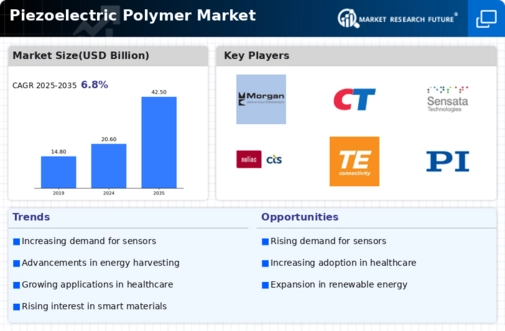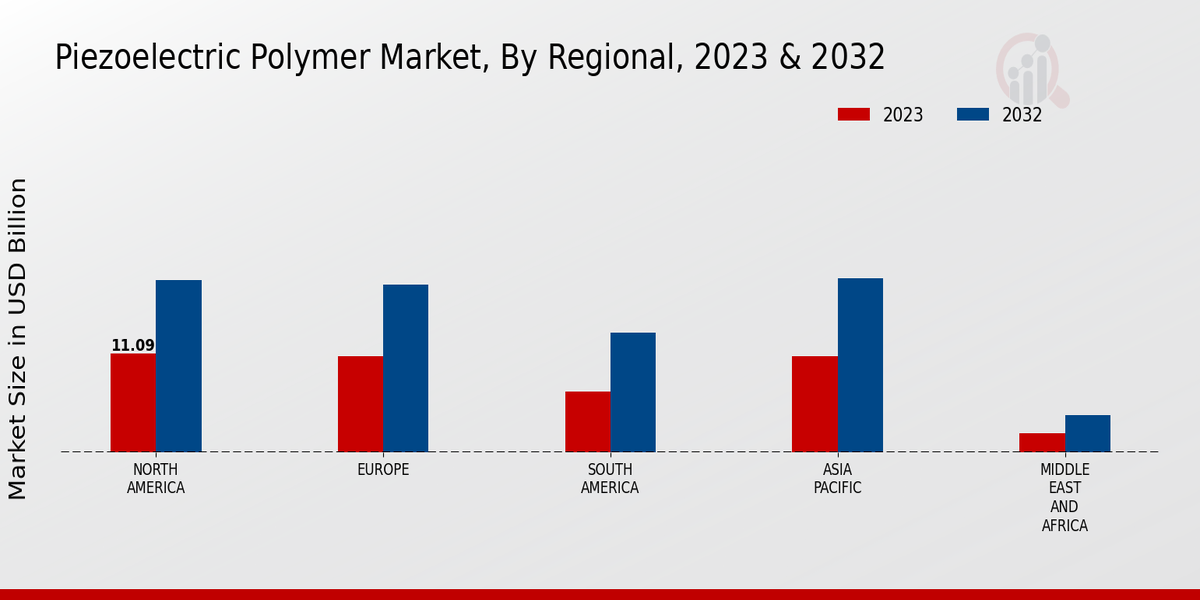Market Growth Projections
Rising Applications in Healthcare
The healthcare sector is increasingly adopting piezoelectric polymers, thereby driving growth in the Global Piezoelectric Polymer Market Industry. These materials are utilized in medical devices such as ultrasound transducers and biosensors, which require precise and reliable performance. The ability of piezoelectric polymers to convert mechanical stress into electrical signals enhances diagnostic capabilities and patient monitoring. As healthcare technology advances, the demand for innovative materials that improve device efficacy is likely to rise. This trend suggests a promising future for the market, with projections indicating a potential market size of 42.5 USD Billion by 2035.
Growing Demand for Smart Materials
The Global Piezoelectric Polymer Market Industry is experiencing a surge in demand for smart materials, which are increasingly utilized in various applications such as sensors, actuators, and energy harvesting devices. This trend is driven by the need for advanced materials that can respond to environmental stimuli. For instance, piezoelectric polymers are being integrated into wearable technology, enhancing user experience through real-time data collection. The market is projected to reach 20.6 USD Billion in 2024, indicating a robust growth trajectory as industries adopt these innovative materials to improve functionality and efficiency.
Expansion in Automotive Applications
The automotive industry is witnessing a significant expansion in the use of piezoelectric polymers, which is contributing to the growth of the Global Piezoelectric Polymer Market Industry. These materials are being integrated into various automotive components, including sensors for monitoring vehicle performance and energy harvesting systems that enhance fuel efficiency. As the automotive sector increasingly embraces electrification and automation, the demand for advanced materials that improve vehicle functionality is likely to rise. This trend not only supports the market's growth but also aligns with the industry's shift towards more efficient and technologically advanced vehicles.
Increased Focus on Sustainable Solutions
There is a growing emphasis on sustainability within the Global Piezoelectric Polymer Market Industry, as industries seek eco-friendly alternatives to traditional materials. Piezoelectric polymers, being lightweight and versatile, offer a sustainable option for various applications, including automotive and consumer electronics. Their ability to generate energy from mechanical movements aligns with global sustainability goals, making them attractive to manufacturers aiming to reduce their carbon footprint. This shift towards sustainable practices is expected to bolster market growth, as companies increasingly prioritize environmentally responsible materials in their product development strategies.
Advancements in Energy Harvesting Technologies
Technological advancements in energy harvesting are propelling the Global Piezoelectric Polymer Market Industry forward. Piezoelectric polymers are pivotal in converting mechanical energy into electrical energy, which is crucial for powering small devices and sensors. This capability is particularly valuable in remote or inaccessible locations where traditional power sources are impractical. The increasing focus on sustainable energy solutions further amplifies the relevance of piezoelectric materials. As the market evolves, it is anticipated to grow at a CAGR of 6.81% from 2025 to 2035, reflecting the expanding applications of these polymers in energy-efficient technologies.












